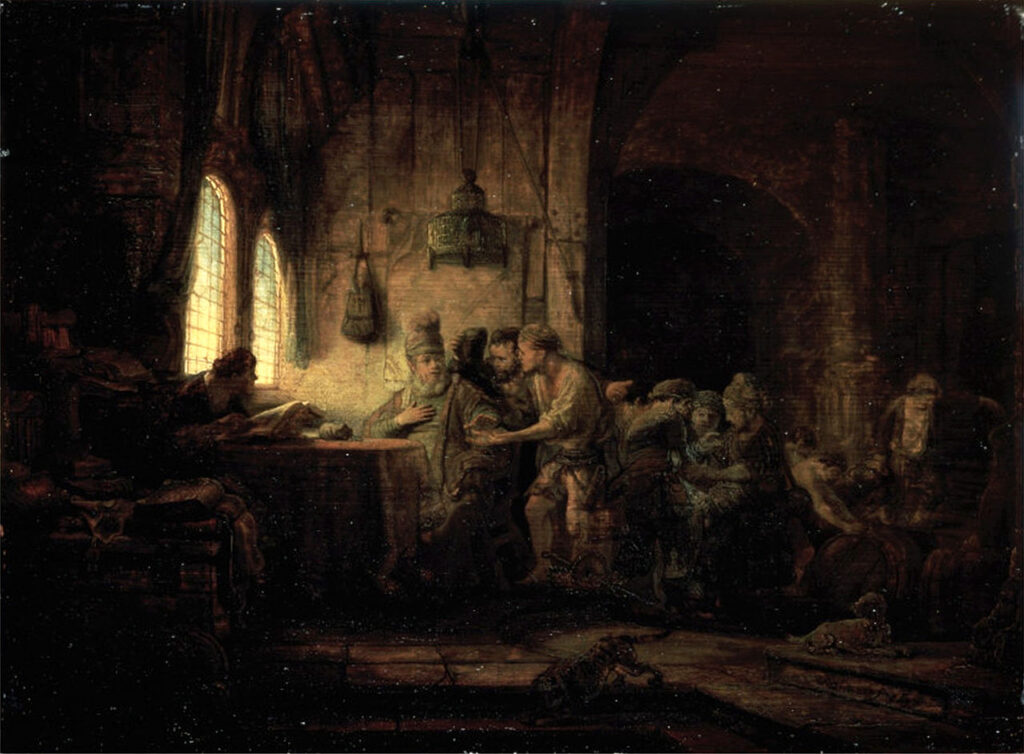Cantata 144 was composed for Septuagesima Sunday in 1724, which fell on February 6. Septuagesima, meaning “within seventy but more than sixty days before Easter”, is also referred to as the 3rd Sunday before Lent, which is the period before Easter. As we continue to traverse Bach’s first year in Leipzig, we are now between Epiphany and Lent, counting Sundays towards Lent instead of “after Epiphany”.
The Gospel reading for this Sunday is Matthew 20: 1-16, the “Parable of the Workers in a Vineyard”. While this parable is susceptible of different readings and levels of interpretation, the anonymous librettist takes it at its simplest, and creates a text revolving around being content with what’s given to each of us, thus avoiding the “sorrow and trouble” of wishing for something that we don’t have or that was given to someone else. The libretto integrates a dictum from the reading itself (verse 14), and two chorales: movement 3 is from a hymn by Samuel Rodigast (1674) and the closing chorale is by Albrecht von Brandenburg (1547). The libretto doesn’t follow a narrative or include and inflection point. Rather, it reads like a sermon in which each movement elaborates from a different angle on the same or a similar idea, leaving the full responsibility of bringing it to life to Bach’s musical setting.
The cantata is scored for modest forces: 2 oboes (plus one oboe d’amore for the soprano aria), strings, continuo, four-part choir, and soprano, alto and tenor soloists.
The opening movement is a motet-style choral fugue which goes directly into the subject, first stated by the tenors, followed by the basses, then the sopranos, and lastly the altos. The movement foregoes any instrumental ritornello (is this Bach telling us to be content with what he gives us?). The instruments double the voices throughout, except for the basso continuo line which is independent from the basses. The theme includes an interesting illustration of “gehe hin” (“go away”), with shorter notes and multiple repetitions, evocative of the vineyard owner’s exhortation.
The aria that follows, on the topic of not complaining and being satisfied with your lot, is given to the alto with string and continuo accompaniment. It sets the title words (“murre nicht”, “do not complain”), to a low tessitura for voice and strings alike, with repeated notes on the strings that suggest a grumble or murmur, made even more illustrative by the movement’s minor mode.
A chorale then rounds up the first part of the cantata, set to simple four-part harmony on the well-known tune to the Rodigast text, used by Bach in several other cantatas including three (BWV 98, 99 and 100) which carry its first line as their title. A switch to a major key gives additional impact to the text’s positive message.
The second part of the cantata continues with a tenor recitative and a soprano aria. The “secco” recitative continues to elaborate on contentment and the consequences of discontent, closing with the title line of the previous chorale set as a brief arioso for emphasis.
The soprano aria, nicknamed “the Buddha aria” by Dr. Michael Maul, is a celebration of contentment with a subdued character, given its “andante” tempo marking and the accompaniment by an oboe d’amore and continuo. The word “Genügsamkeit” (“contentment”) is repeated constantly, set to a melodic cell that supports its unique prosody. The aria’s structure is quite peculiar, since instead of using the expected “da-capo” form, Bach sets its entire text twice, to different music.
The cantata closes with the Albrecht hymn stanza set to plain four-part harmony.
